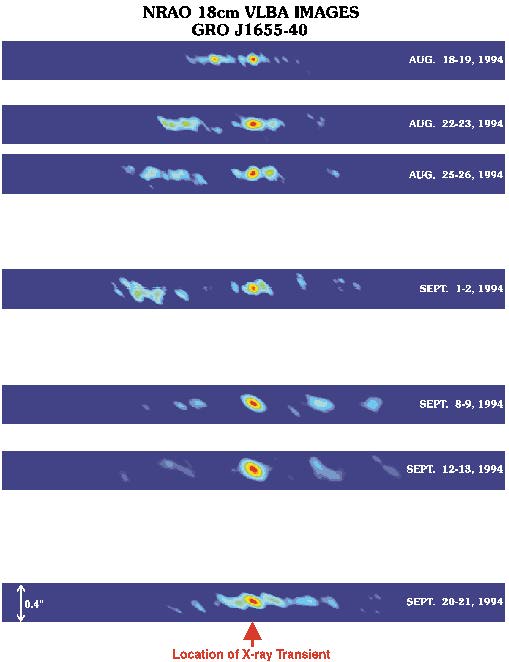
The radio images of GRO J1655-40. The ejection of "blobs" of material which stream away from the central source can be discerned.
| In either case it is accretion onto the compact object which is responsible for the gamma-radiation. A more accurate spectral measurement using OSSE gave support to the black-hole scenario, as did the fact that periodic pulsations - a sign that the radiation is associated with the rotation of a neutron star - were not evident in the data. The true nature of GRO J1655-40 could not be unambiguously determined by Compton alone - observations at radio, optical and x-ray are required to distinguish between the likely possibilities, or perhaps reveal some unexpected alternative. | 
The radio images of GRO J1655-40. The ejection of "blobs" of material which stream away from the central source can be discerned. |
The BATSE time history of gamma-ray emission from the transient source GRO J1655-40 as compared to the radio lightcurve.
|
To gamma-ray astronomers, or for that matter to scientists in general, the prospect of finding the unexpected is often the most exciting endeavor! For GRO J1655-40, the team of gamma-ray astronomers using CGRO, radio astronomers using the Very Large Array (VLA - an array of radio telescopes mounted in an 22-mile long "Y" shaped configuration on the desert of New Mexico), and astronomers working in the visible domain using telescopes in the Chilean Andes were not disappointed! What they discovered was that GRO J1655- 40 did in fact contain a black hole. |